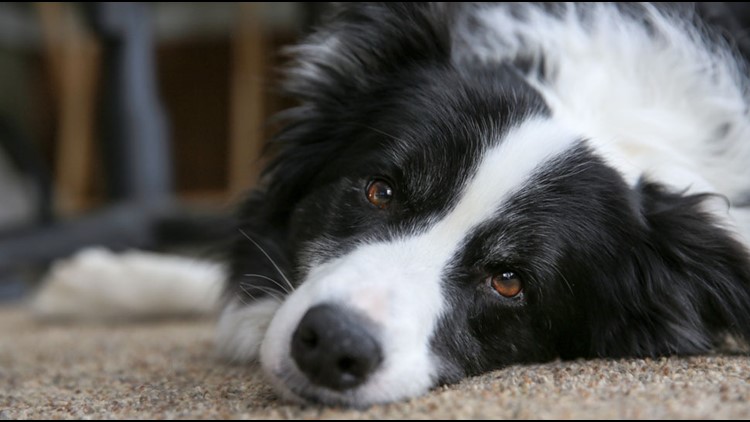Sponsored: Ohio State Veterinary Medical Center
Separation related behaviors and problems are a collection of behaviors that dogs perform because some part of the process of being home alone creates physical and physiological distress. This may be frustration, fear, or panic. It can result in a myriad of behavioral outputs ranging from vocalization (barking, crying, and whining), pacing, destruction, elimination (urinating, defecating), drooling or being shut down.
These are independent of who the dog lives with, their overall training status, or their inclusion in activities deemed “spoiling” (being allowed on the couch, people food, sleeping in your bed, etc.) They are a behavior pathology and are not retaliatory or spiteful.
With many families being home due to pandemic restrictions, it is important to be aware of and discuss separation-related issues.
Dr. Leanne Lilly is an Assistant Professor of Behavioral Medicine at OSU’s Veterinary Medical Center. She said separation anxiety is relatively common.
Dr. Lilly noted this pandemic can present challenges for your pet, especially when we are no longer home all the time.
"We clinically see that schedule changes and household changes are actually very common causes of separation anxiety for some pets" she said.
If your dog has a history of separation related issues, change in departure of routine can make it worse. Working at home, leaving at different times, or not being home as often can cause these separation issues to flare up. Below are some suggestions to help ease the transition and help decrease separation -related behaviors.
- Practice leaving your dog alone for some periods of the day every day. Keeping to a departure time close to what your work schedule was can be helpful, even though you’re unlikely to be gone for as long.
- Start small with short departures, e.g. 20 minutes to go to the grocery store. If your dog already has a departure pattern, continue to use all features of it, including any medications or supplements provided by your veterinarian.
- If possible, video your dog for these departures. Nanny cams work great for live time spying on your pup. You should not speak to your dog (clinically we have not seen this improve a pet’s separation anxiety and have seen many dogs become distressed by it). Watch for signs
- that your dog is stressed, such as a stiff body, cowering, freezing, yawning, lip licking, pacing, holding one leg up, drooling, panting, or inability to eat treats while you’re away.
- If your work schedule is likely to change after a period of time at home, slowly move your practice departures from your current time to the new time while you are home. A good rule of thumb is 5 to 15 minutes of change in time every three departures, provided there are no signs of stress. For example, if you used to leave the house at 7:30 but will be changing to a 9:30 departure, incremental adjustments in your practice departures would be the following rather than jumping directly from 7:30 to 9:30.
- Depart at 7:40 for three days, depart at 7:50 for three days, depart at 8:00 for three days, etc.
Even if your dog has not had separation-related problems in the past, it is best to be proactive. Video your dog during your next set of errands and continue to occasionally leave your dog home alone
so they do not become accustomed to you being home 24/7.
Dr. Lilly is quick to point out that this is an “ounce of prevention being worth a pound of cure” situation.
“Many dogs may do just fine with this transition but setting our pets up for success just in case, especially recently adopted or fostered dogs or those with pre-existing separation related problems - is best practice. Like emotional hygiene to go with our hand washing and mask wearing.”



